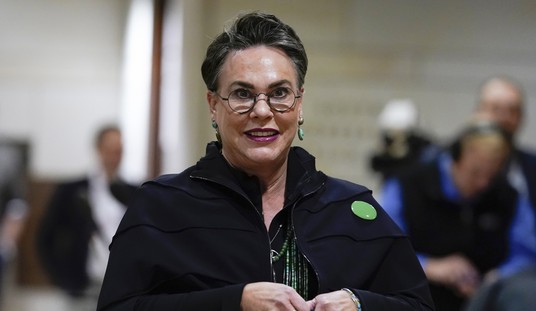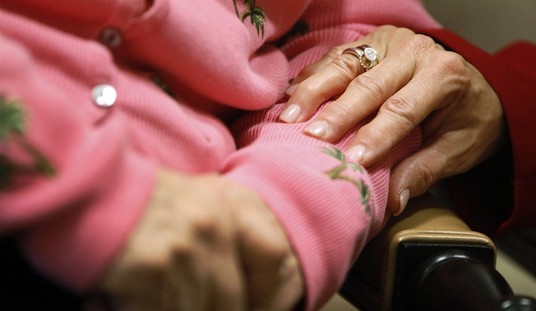
The seams of the foster care systems throughout the country are bursting due to the opioid crisis. As local governments beg for new foster families to alleviate the influx of children needing homes, an outrageous situation has developed in New York that serves as a window into how bureaucracy has at-risk children bound in red tape during their formative years.
While they are pleading for increased funding and additional foster parents, the Erie County Department of Social Services has essentially declared an expensive war on one foster family who spoke up and fought for their foster daughter. The family has repeatedly won in court in their efforts to do right for the child, while Erie County bureaucrats continue using taxpayer dollars intended for these at-need children to appeal each judge who has ruled in favor of the foster family.
David and Rachel Schneiter of suburban Buffalo stepped up to become foster parents. They accepted Baby N into their family when she was just 12 weeks old after she was removed from a neglectful situation. Initially, Baby N’s two older biological brothers were returned to birth mom, and two months later, removed and placed in foster care with a different foster parent than their sibling.
Baby N’s birth mother ended up losing her rights to all 3 children; and about then, Baby N had lived over a year with the Schneiters, and they welcomed the chance to adopt Baby N, who now had experienced restored health and had “thrived” in their care by the county’s own report. That’s when the Erie County Department of Social Services began taking steps to do what they called “reuniting” Baby N with biological siblings, despite the fact that the children hadn’t lived together since Baby N was 11 weeks old, and the regulatory time to place siblings together (30 days into foster care placement) had passed. Erie County DSS had no evidence that Baby N had a bond with her legal half-siblings; on the contrary, evidence showed even caseworkers observed a significant bond between the Schneiters and Baby N.
Still, in June 2016, DSS proceeded to move Baby N from the only stable family she had ever known to a home with essential strangers. She was moved against medical advice, against the regulatory guidelines, and without the Best Interest hearing or the bonding assessment, the child was entitled to. They violated the child’s rights, as well as the “Standing” status that foster parents have once a child has lived with them a year. Baby N had lived 370 days with the Schneiters, and now Baby N was cut off from seeing them — the only source of comfort and stability for a child had who had already suffered and overcome so much in her short life.
The Schneiters retained an attorney, though as it turns out, attorney fees for foster parents are only granted in cases of adoption in New York. When Baby N’s interests were ignored, it was her foster family that would step up and foot the bill.
And foot the bill they did — to the tune of tens of thousands of dollars. One could only surmise that DSS waged a legal war and appealed on the Schneiters out of embarrassment and fear — they had no grounds to move this child, and returning Baby N would set a precedent — now they might have to actually abide by the state regulations.
The Appellate court decision affirmed the lower court’s decision, including what was missed:
“Here, petitioners offered uncontroverted expert testimony at the fair hearing that the child’s removal from petitioners’ home and the disruption of the primary bond that the child had developed with petitioner Rachel Schneiter was contrary to the child’s best interests and represented a “trauma” that will have a “significant impact on all areas of her development.” Moreover, the record of the fair hearing establishes that DSS, prior to removing the child, did not evaluate or even consider the child’s emotional relationship with her siblings or her attachment to petitioners, both of which are enumerated in 18 NYCRR 431.10 (b) as “[f]actors to be considered in making a determination of whether siblings or half-siblings should be placed together.” Based upon the foregoing, we conclude that the court properly determined that the decision of OCFS to not return the child to petitioners’ home immediately was in error.”3- 984.1 CA 17-00545
Erie County DSS has been appealing judicial rulings for almost two years. The Schneiters have had visitation with the girl they consider their daughter during this battle. They see Baby N twice a week. The bond has been maintained during this prolonged fight. Perhaps DSS believed the Schneiters would buckle and give up under the weight of legal fees and other burdens associated with this case. But that is not happening. The Schneiters have continued fighting for what they believe is the best interest of this child.
From The New York Daily News:
The Schneiters filed an administrative appeal with the state Office of Children and Family Services. They pointed out what should have been obvious to anyone: Removing a baby who had spent the first year of her life with a stable, loving family to put her with strangers seemed crazy. Of course it’s beneficial to keep siblings together but at what cost? Taking them away from the only mother they’ve ever known?
It took Family Services until October 2016 to reach the same conclusion, deeming the Department of Social Services’ decision “arbitrary and capricious.” But instead of ordering Baby N.’s return to the Schneiters, Family Services ordered another Department of Social Services evaluation.
When Social Services failed to complete the evaluation, the Schneiters went to state Supreme Court, which concluded in February 2017 that Family Services had “abused its discretion in remitting the matter to (the Department of Social Services) and should have, among other things, immediately returned the child to the petitioners.”
Unfortunately the decision was too vague — saying that the child should be returned as soon as is practical — for the bureaucrats at Erie County, who once again did not return Baby N.
The legal fight continued. In October , the 4th Appellate Division reached the same conclusion as the lower court, ruling that the removal “was contrary to the child’s best interests.” But then the court said that because so much time had elapsed since the initial evaluation, Social Services should conduct yet another evaluation — and hold a final hearing May 14 .
It’s hard to imagine that this amount of government resources is being poured into a battle with a foster family. The only obvious explanation is that these bureaucrats are attempting to cover their mistake in improperly removing Baby N from the only family with whom she was bonded.
People often ask foster parents, “How can you do that?” How can they put their hearts on the line to later experience complete heartbreak? They do it because they believe the sacrifice is worth it. In this particular case, it is Erie County DSS that should be asked: “How can you do that?”














Join the conversation as a VIP Member